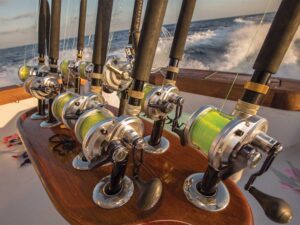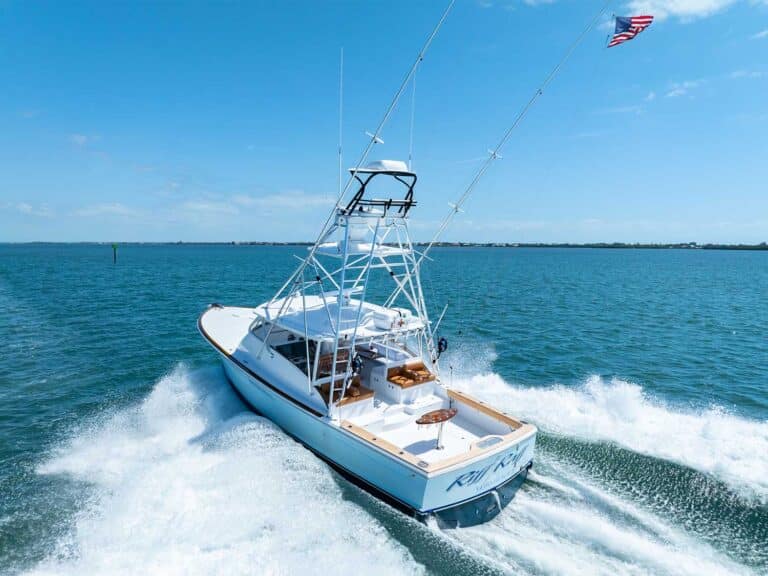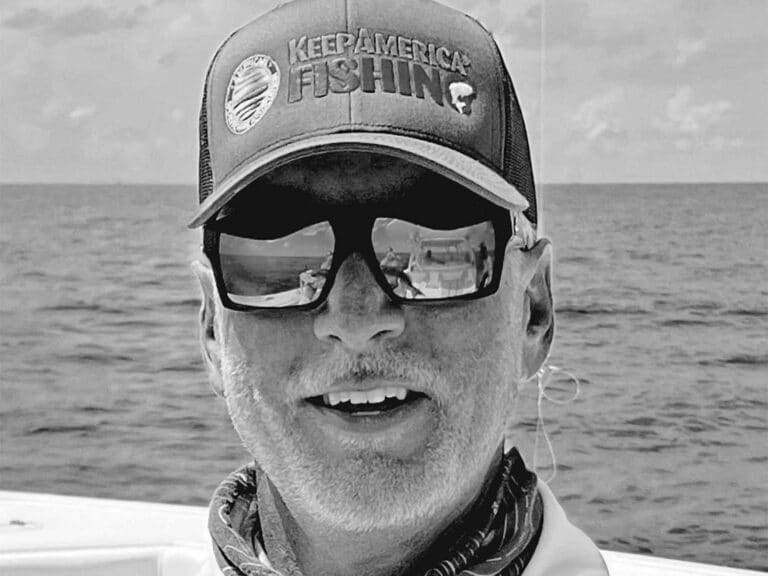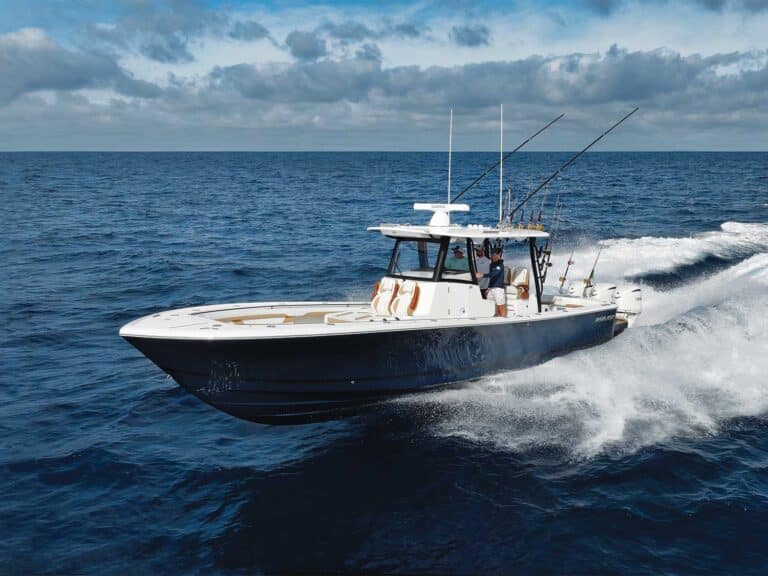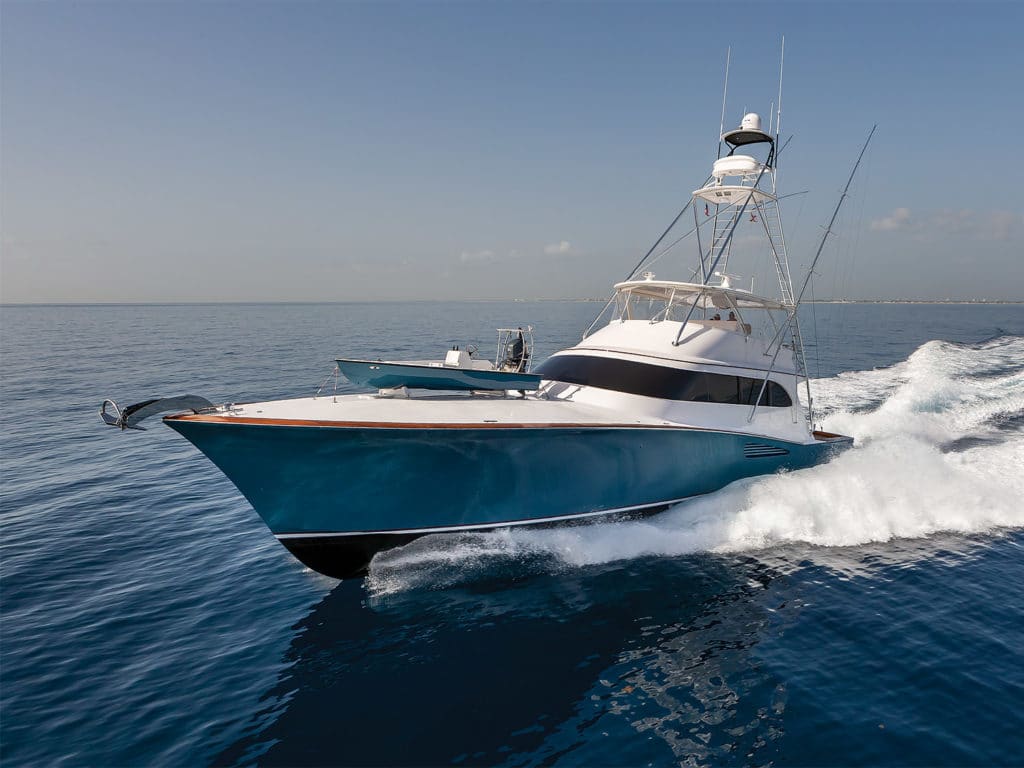
Weaving your way through the shallow-island channels of your current destination, you promptly notice the bonefish tailing the flats from your perch in the tower. As you pull in the slip to get your trip started and your program set up for the season, the boat next to you is unloading their skiff from the bow, and they immediately take off to explore the shallows you were admiring—wishing you were fishing.
But wait: You’re there to fish offshore, to catch marlin, right? Maybe, maybe not. It gets mighty lonely at the dock when you’re weathered-in and watching other guys getting in on the shallow-water action, or having the ability to take interisland jaunts to the leeside. It’s this desire that’s leading more owners to make the decision to travel with a skiff on the foredeck of their sport-fishers.
Gone are the days of toting around heavy skiffs or ugly rubber tenders. Today’s low-profile ultralights easily take to riding on the bow, and frankly, some of them are quite good-looking. Traveling with a tender is nothing new, but it is getting easier as boats are getting bigger. There is now more room on the deck to carry a skiff for exploratory light-tackle missions or beach outings. It definitely requires additional maintenance, and there are a lot of things to consider, but if you ever find yourself wondering what to do with your crowd when going offshore isn’t an option, perhaps you should consider it, if it makes sense for your program.
Inspect, Then Deploy
Unlike sitting on the trailer at home, a skiff living on the bow takes a constant beating and must be maintained appropriately. Similarly, the davit must also be maintained. As with anything in the marine environment, rinsing the components thoroughly with fresh water and lubricating with something such as silicone spray will ultimately save you from running into problems down the road. Corrosion of any type—mostly due to salt water—is destructive to moving parts in general, and neglecting the components you can’t see is bound to creep up and sidetrack you into a maintenance day rather than your regularly scheduled day of fun.
But before you run out and buy a skiff, you’ll first need to be sure your foredeck is structurally sound and can support a davit. On more occasions than I’d like to admit, I have seen davits installed on boats that were not solid enough, reinforced or even properly set up for davit use, which is a real problem. Best-case scenario: You have stress cracks and leaks. Worst-case scenario: The davit breaks loose and comes out of the deck, the skiff shifts from its cradle—or falls—and, well, you can imagine how bad that could turn out.
If you have your builder or yard manager inspect the superstructure for soundness and hire the right company to install the davit, then it’s no trouble at all. Or if you’re building a new boat and are planning to have a skiff to ride around with, then be sure to let them know at the outset.
It can be a simple setup, really, with a regular davit on the deck that goes down through the cabin for structural support at the base. Of course, you might need to sacrifice a few square feet, but most ideas can come to fruition if the plans are included as part of the build straightaway. There are some amazing designs on custom boats where the davit is actually hidden below the deck; you don’t even see it when it’s not in use. Always consider both aesthetics and utility; you don’t want it to look nice but be a nightmare to deploy.
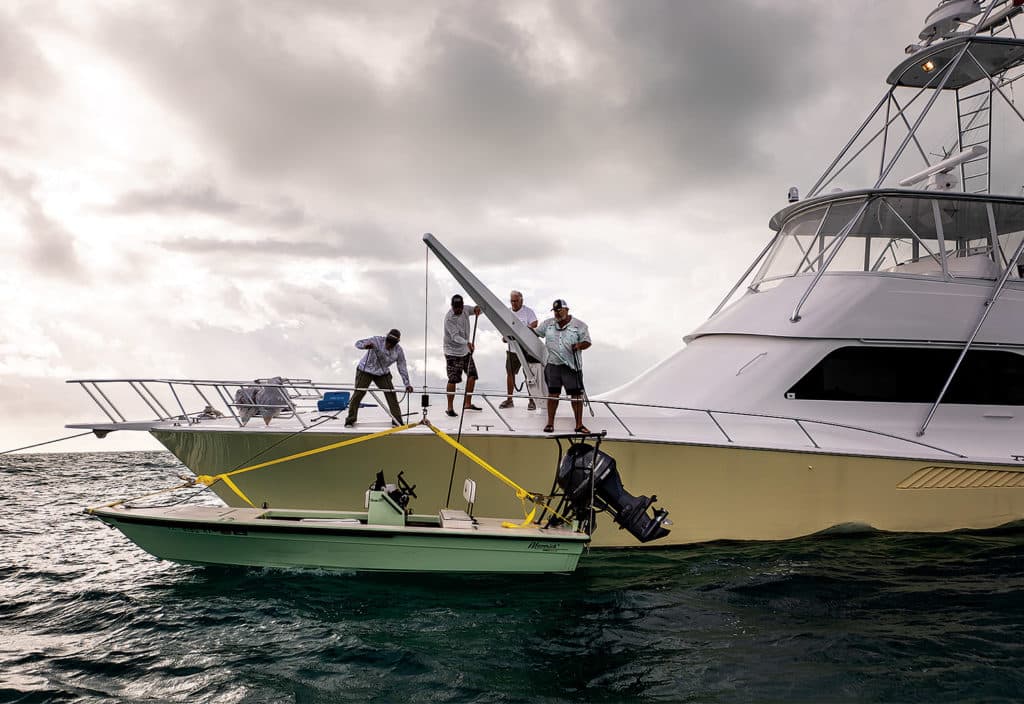
Choose Your Skiff
Due to their size, options for skiffs are often more limited than just picking out your favorite—although, in my humble opinion, flats skiffs look best paired up with a sportboat like the program is ready to do battle in any water. Davits do, however, have weight limitations, and the tender itself has its own structural considerations, such as lifting points for the harness. Builders who specialize in custom, lightweight flats skiffs—or even scaled-down, bare-bones microskiffs such as Dragonfly, Chittum, Maverick and Hell’s Bay—welcome your questions. Consulting with the builder will give you some good, needed feedback and possibly shed light on other things to consider that you might not have thought of.
Any boat, no matter the size, is not void of accessory needs. Separating your skiff’s needs—ropes, life jackets, first-aid kits, safety equipment, tools, tackle boxes, coolers—from the rest of your big-boat equipment will make it easier on you all around. Not only will it all be contained in its own bin or waterproof gear bag, but it also keeps the process fluid and makes for easy clean up at the end of the day. It also won’t be contributing to the ultimate weight constraints of the lifting davit. Finally, be sure to consider the possibility of having the skiff lay against the big boat overnight when on the hook or tied up to a T-head. A few small, round—and collapsible—fenders will get you through the nights when the wind kicks up or a storm rolls through.
Read Next: Meet Roy Merritt in our exclusive interview.
Rock the Cradle
Once the davit is in place, the chocks need to be in a location where there isn’t a major impact on the center of gravity. On sport-fishing boats, this is most always back-plated and through-bolted on the centerline. It is also important to note that the skiff mustn’t interfere with any deck hatches or escape routes, therefore it is necessary that you choose a service yard experienced in your make of vessel, or one that has a good reputation for installations such as these.
All boats have unique bottom designs, so you’ll quickly learn that a perfectly fitted custom cradle is needed. No matter how diligent you are at strapping down your skiff, it will move, so making sure it doesn’t dance out of the cradle is imperative. Some davit-manufacturer reps will also fabricate and install the custom cradles, but they need to know what the specs are. Skiff builders who use CAD in the manufacturing process can easily send a digital file to the CNC machinist, who will ensure your skiff’s hull fits the cradle like a glove.
While getting your shallow-water groove on might seem to be an easy process, it always turns out for the better when you think things through. In applications such as these, be sure your davit is installed by the boatbuilder or companies that specialize in marine-crane applications, such as MarQuipt, Nautical Structures or UMT Marine, and the skiff you choose must be built for this purpose. From there, the options are bound only by your imagination. Having a travel-friendly skiff opens up a whole new world of fishing.
